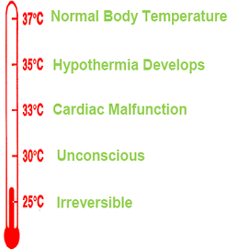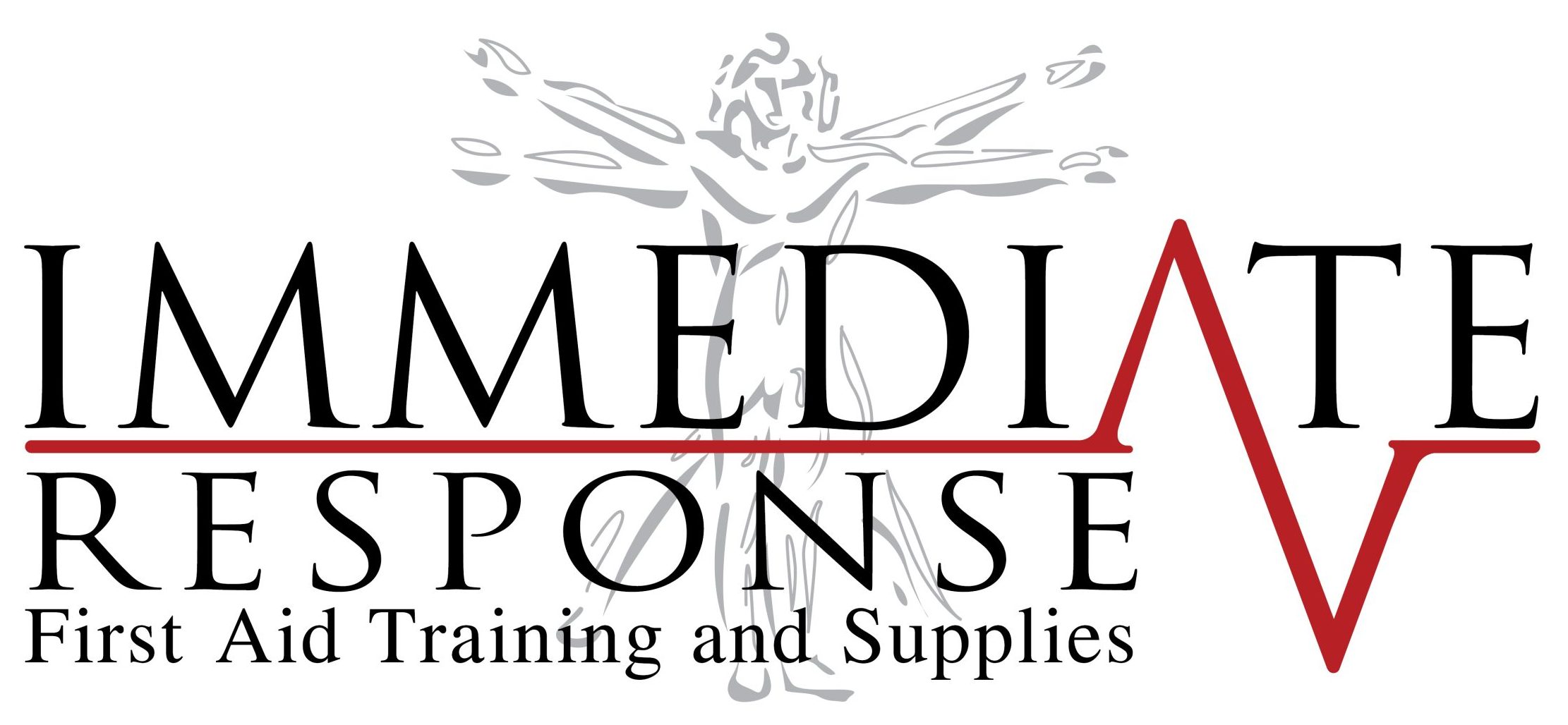Hyperthermia and Hypothermia Emergencies
Humans and other mammals are able to maintain a relatively constant body temperature despite widely ranging environmental temperatures. Although the average human body temperature is 36.7°C, this temperature varies depending on individual differences, time of day, the stage of sleep and the ovulatory cycle in women. Thermoregulation is the balance between heat production mechanisms and heat loss mechanisms that occur to maintain a constant body temperature.
Body temperature is regulated by a system of sensors and controllers across the body. The brain receives signals regarding body temperature from the nerves in the skin and the blood. These signals go to the hypothalamus, an area of the brain responsible for controlling functions such as water balance, sleep, food intake, the development of the body during puberty and body temperature.
When the body is too hot, it decreases heat production and increases heat loss. One way of increasing heat loss is through the dilation of blood vessels in the skin. When these vessels dilate, large quantities of warmed blood from the core of the body are carried to the skin, where heat loss may occur via radiation, convection, and conduction. Evaporation of fluids from the body also causes heat loss. Humans constantly lose fluids from the skin and in exhaled air.
When the body is too cold, it increases heat production and decreases heat loss. It can do this by constricting the vessels of the skin, helping to prevent heat loss. Shivering, which is a rhythmic contraction of skeletal muscles, produces heat. Heat can also be produced by the release of specific hormones.
Hypothermia
Hypothermia is a potentially life-threatening condition, which occurs when body temperature falls below 35°C. The normal function of most human body systems and organs requires the body’s temperature to be controlled within the narrow limits of 36.5°C to 37.1°C. As the body’s temperature falls, systems and organs progressively fail until death occurs, usually from cardiac arrest. Infants and elderly are at greater risk of developing hypothermia.
Common Causes of Hypothermia
- Environmental – exposure to cold water and conditions.
- Trauma – trauma, immobility, burns.
- Systemic Illness – malnutrition, severe infections.
- Neurological – stroke, altered consciousness.
- Endocrine – impaired metabolism.
- Drugs – alcohol, sedatives.
Mild Hypothermia

 Shivering.
Shivering.
 Pale, cool skin.
Pale, cool skin.
 Impaired coordination.
Impaired coordination.
 Slurred speech.
Slurred speech.
 Responsive but with apathy or confusion.
Responsive but with apathy or confusion.
 Slow pulse.
Slow pulse.
 Infants will be quiet and refuse to eat
Infants will be quiet and refuse to eat

Moderate to Severe Hypothermia

 Reduced or absence of shivering.
Reduced or absence of shivering.
 Pale, cool skin becoming blue and cold.
Pale, cool skin becoming blue and cold.
 Increasing muscle stiffness.
Increasing muscle stiffness.
 Progressive decrease in consciousness.
Progressive decrease in consciousness.
 Slow irregular pulse.
Slow irregular pulse.
 Breathing is slow or not able to be detected.
Breathing is slow or not able to be detected.
 Unconsciousness.
Unconsciousness.
 Casualty may appear dead.
Casualty may appear dead.

![]() Call 000 for an ambulance urgently.
Call 000 for an ambulance urgently.
 Remove from cold environment and protect from wind, rain, cold, wet ground.
Remove from cold environment and protect from wind, rain, cold, wet ground.
 Remove cold and wet clothing – do not remove if there is no other cover available.
Remove cold and wet clothing – do not remove if there is no other cover available.
 Warm casualty by drying wet skin then wrapping in blanket, “space blanket”, sleeping bag.
Warm casualty by drying wet skin then wrapping in blanket, “space blanket”, sleeping bag.
 If fully conscious, give warm fluids to drink (preferably sugary drinks).
If fully conscious, give warm fluids to drink (preferably sugary drinks).
 DO NOT give alcohol.
DO NOT give alcohol.
 If the casualty is not shivering, cautiously apply an external source of heat such as a heat pack or body to body contact. Ensure any heat source is only warm and not hot to avoid burns.
If the casualty is not shivering, cautiously apply an external source of heat such as a heat pack or body to body contact. Ensure any heat source is only warm and not hot to avoid burns.
 DO NOT place the casualty in a warm bath.
DO NOT place the casualty in a warm bath.
 Be prepared for sudden collapse and the need to commence CPR.Hyperthermia
Be prepared for sudden collapse and the need to commence CPR.Hyperthermia
Prevention
On warm humid or hot days:
 Keep infants and the elderly in cool, ventilated areas and provide plenty of fluids.
Keep infants and the elderly in cool, ventilated areas and provide plenty of fluids.
 Wear light coloured, loose-fitting clothing during physical activity.
Wear light coloured, loose-fitting clothing during physical activity.
 Wear a hat when outside.
Wear a hat when outside.
 Consume plenty of fluids during exertion.
Consume plenty of fluids during exertion.
 Allow six weeks for acclimatisation with progressive exercise before competition.
Allow six weeks for acclimatisation with progressive exercise before competition.
 Avoid vigorous exercise during a viral illness.
Avoid vigorous exercise during a viral illness.
 Plan events to be held in the early morning or late evening and in the cooler months of the year.
Plan events to be held in the early morning or late evening and in the cooler months of the year.
 Provide regular water stations.
Provide regular water stations.


